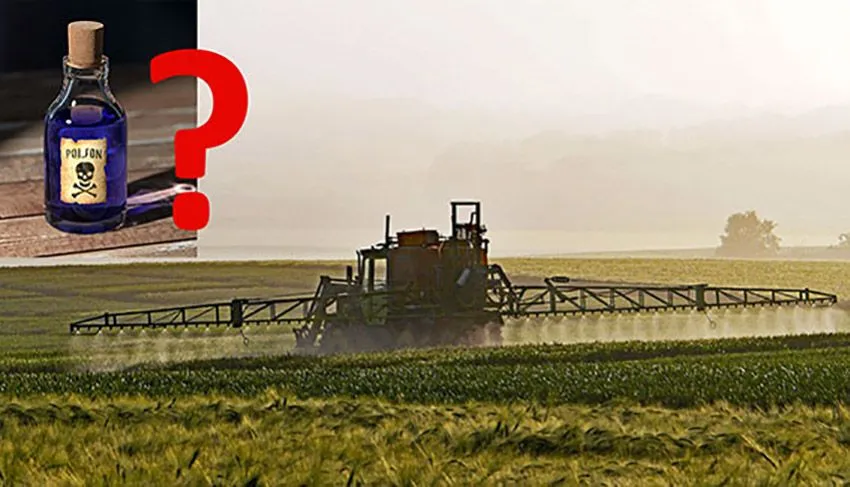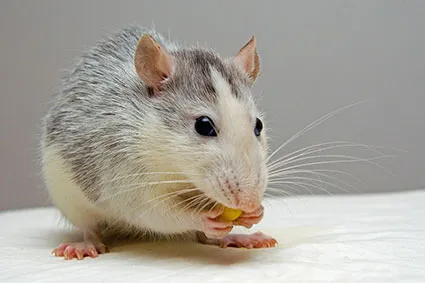A certain pesticide has dominated lunch table talks of toxicologists over the last weeks and I just have to add my grain of salt to that discussion.

Intro
As many of you will know, glyphosate is a herbicide that the EU authorities (parliament vs commission) recently battled over. The question was whether to renew its licence or not after the International Agency for Research on Cancer (IARC) described it as “probably carcinogenic”, while the European Food Safety Authority (EFSA) did not see a reason to ban it. So there is a rift between legal authorities, responsible agencies and also between scientists in the field.
But how is it possible that two respected scientific panels come to completely different opinions on one and the same chemical?
The problem
I think that the main issue here is a problem that is in general allowing great misinterpretations by non-scientist and is thus – sadly - eroding the public trust in the whole field of toxicology: conflicting studies.
In other words, when you look up toxicological studies on one and the same compound, you often find very different – and sometimes contradictory - results.
While the public opinion seems to be positive that this was caused by a powerful money-throwing and arguably evil corporation (Monsanto), I am quite convinced that the reason is just the way our scientific discipline works (or has to work).
To understand this, it's important to remember that there are different types of toxicological studies, with different strenghts and weaknesses:
in vitro
Studies on cultured cells – so-called in vitro studies - are the fastest and cheapest method. They are used for “screening” – a fast check whether a compound exerts a certain toxic effect, and also for exploring the mechanism of known toxins at the cellular level. Results of in vitro studies are often preliminary – just the kick-off for more detailed research. Because they cannot take into account the behaviour of chemicals inside an organism (with all the complex mechanisms of uptake, metabolism, stability, distribution, etc.), data from in vitro studies cannot act as a stand-alone risk assessment.
And toxicologists know this. But others don’t. So very often you will see newspaper headlines that this or that compound was found to promote cancer or to protect from cancer or whatever, just to find out later it’s only a useless in vitro study they cited.
in vivo (animals)
Let’s take a look at the second main type of tox studies, those which rely on feeding toxins to animals, mainly rats or mice. These in vivo studies are usually the follow-ups on promising in vitro results (yes, for us toxicologists a toxic effect is “promising”). They give you a lot more information than in vitro experiments, as here the behaviour of your toxin inside the animal body is taken into account. If you find a toxic effect in such a study, chances are well that your chemical is toxic for humans as well - at least in the concentrations applied, for often toxin ammounts used in the lab are ridiculously high.
This kind of studies is used for chemical licencing by the authorities. But of course, animal studies have limitations as well. First off, every species is different and might react differently to a chemical - e.g. a rat could hypothetically tolerate higher concentrations of glyphosate than humans. Second, long-time exposure (several years) to small concentrations is not measureable in rodents – simply because they don’t live long enough.

Cutie might be eating glyphosate...In my defense: I'm doing in vitro!
epidemiologic
On contrary to pharmaceutic scientists, toxicologists – for obvious reasons – cannot feed toxins to humans. So we have to use an indirect approach to gain toxicological data on humans – the so-called “epidemiologic study”. After several years that a chemical – let’s say a herbicide like glyphosate – is on the market and thus humans are exposed, researchers compare people with high exposure to people with no or low exposure to find out differences of – for example – cancer rates.
But this is tricky as well, as it is sometimes very difficult to isolate the effect of a single compound here. For example, if you want to compare consumers of organic food to consumers of glyphosate-treated food, you have to consider that the glyphosate – treated food probably came into contact with other pesticides as well.
Conclusion and back to glyphosate
To sum it up: risk assessment is very tricky. And the different kinds of studies, the different concentrations of the toxin used, but also the improvement of scientific methods over time can lead to conflicting results, that are hardly interpretable for non-toxicologists.
And this is exactly what happened with the glyphosate story. Early on in vitro studies and animal studies showed no toxic effects. Then, two in vitro studies using way to high concentrations found toxic effects in certain cell lines. Several epidemiologic studies found no toxicity whatsoever, but a few of them did find a slightly elevated risk to develop a certain type of cancer for high-exposure groups – not food consumers, but farmworkers who got into contact with pure glyphosate.
So based on the same data, the EFSA said that the use of glyphosate in agriculture would not lead to toxic concentrations in food, and the IARC classified glyphosate as “probably carcinogenic”.
And both are right.
Based on the publicised data, one has to conclude that glyphosate is most probably safe to use. BUT there is of course the legit argument that you want to limit every risk, and even if the risk of glyphosate causing any toxic effects in consumers is very low, you would want to eliminate the possibility by banning it.
As scientists could not come up with a conclusive answer, the decision came down to science-oblivious politicians looking for votes and campaign money. The rest is history, and at least 3 more years of conflict are to follow, until politicians meet to decide again.
Sources:
pictures from pixabay & pexels
IARC: http://monographs.iarc.fr/ENG/Monographs/vol112/mono112.pdf
EFSA: https://www.efsa.europa.eu/de/topics/topic/glyphosate
Disclaimer: In my blog, I'm stating my honest opinion as a researcher, not less and not more. Discuss and disagree with me - if you are bringing the better arguments, I might even rethink.